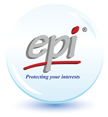I don’t have two active utility feeds coming into my site. Can I still be TIA-942 Certified based on Rated-3 or Rated-4?
There is quite a bit of confusion in the market when it comes to the requirements for the utility feeds for a data centre based on the TIA-942 Standard.
The first thing to clear up is that there is a major difference between the Uptime guidelines vs. the TIA-942 Standard.
The Uptime guidelines state that they do not consider the utility feeds as part of their review as they consider the generators to be the main source of power for the data centre. This has major implications for the generator configuration which means you can’t select the more cost-effective standby generators. This often leads to additional cost for acquiring continuous rated generators or having generators de-rated i.e. you get less bang for the buck so to speak. This could result in higher upfront investment and maintenance cost per kW of ICT load. Another consideration is that running generators at low load factors lead to higher maintenance cost and potentially less reliability.
TIA-942 considers the reality of how data centers operate which is that the utility power feeds are the key source of power, and the generators are on standby mode, ready to take over whenever the utility is temporarily unavailable. Depending on the risk profile of the site this could range from virtually never up to very frequent. Based on the risk profile you should select the appropriate setup.
So, what are the requirements for the utility feeds? The requirement depends on the Rating level. Rating-3 is described as requiring two utility feeds which can come from the same substation. Rating-4 is indicating two feeds from different substations. Please note that for both Rated-3 and Rated-4 there is NO need for different utility providers, both feeds can be acquired from the same utility company. From a theory point of view that sounds all very logical but there is a catch which is that the ability to fulfil this requirement heavily depends on two factors;
- The location at which the data center is situated.
- The code/regulations of the country, or sometimes state/city.
The data center owner has of course the ability to determine where the data center is (going to be) located. However, based on technical and market requirements you are not always able to pick and choose the exact location. For example, you might want to avoid a particular country as they don’t allow two utility feeds to the building. However, if the same country has laws requiring data residency to be within its borders then you clearly have an issue at hand.
The good news is that TIA has the “self-generation” clause. This is a clause which you can apply when there are certain restrictions for the utility power. This clause enables you to upgrade only one of the feeds to continuous rated generators giving you the ability to fulfil the duty of the utility if ever needed. This will allow data centers to be certified for both Rated-3 and Rated-4 even if there is only one utility feed available.














